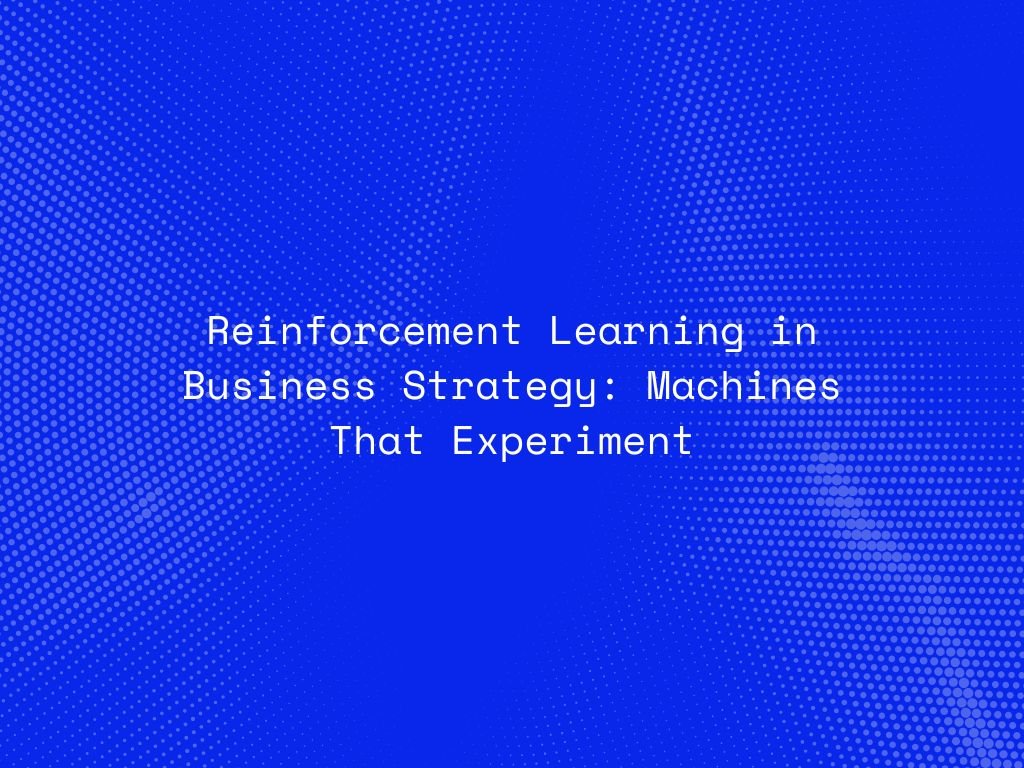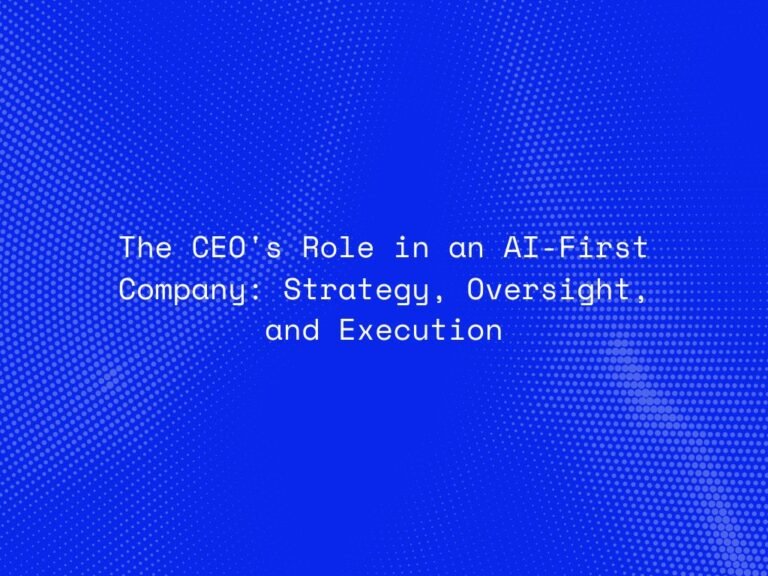In a world driven by data and constant change, businesses are increasingly seeking systems that can adapt, learn, and optimize decisions autonomously. Traditional analytics can identify patterns and correlations, but what if machines could actually experiment and learn from outcomes the way humans do?
That’s exactly what Reinforcement Learning (RL) offers — a dynamic AI approach where algorithms learn by interacting with their environment, receiving feedback, and continuously improving through trial and error. Once confined to academic research and game simulations, RL is now reshaping how organizations formulate and execute business strategies.
What Is Reinforcement Learning?
Reinforcement Learning is a branch of machine learning inspired by behavioral psychology. It operates on a simple principle — learning through reward and punishment. An RL agent interacts with its environment, takes an action, and receives feedback in the form of a reward signal. Over time, it optimizes its actions to maximize long-term rewards.
Unlike supervised learning, which depends on labeled data, or unsupervised learning, which focuses on discovering patterns, RL focuses on decision-making in uncertain and dynamic environments. This makes it uniquely suited for business applications where conditions change continuously and experimentation is key.
How Reinforcement Learning Translates to Business Strategy
At its core, business strategy is about making a sequence of decisions that lead to favorable long-term outcomes. Reinforcement Learning aligns perfectly with this philosophy by mimicking strategic experimentation — trying different actions, analyzing results, and adjusting behavior accordingly.
1. Dynamic Pricing and Revenue Optimization
Retailers and e-commerce platforms are leveraging RL algorithms to continuously adjust prices based on market demand, inventory levels, and competitor behavior. Unlike rule-based pricing systems, RL models learn to identify the most profitable pricing strategies through direct feedback from customer behavior.
2. Supply Chain Optimization
In logistics, RL systems can autonomously decide optimal inventory levels, delivery routes, and resource allocations in real time. For example, a reinforcement learning agent might experiment with different shipment schedules to minimize delays while maximizing cost efficiency.
3. Marketing and Customer Engagement
Reinforcement learning enables personalized marketing strategies that adapt to individual customer behavior. For instance, an RL agent can experiment with different message timings, offers, and channels to determine which combination leads to higher engagement and conversion rates — all without explicit programming.
4. Financial Portfolio Management
In finance, RL algorithms act as intelligent agents that learn investment strategies through market interaction. They dynamically balance portfolios based on changing market trends, volatility, and risk profiles to optimize long-term returns.
5. Operations and Resource Allocation
Businesses can apply RL to optimize workforce management, production schedules, or energy consumption. By experimenting with operational decisions, RL systems find the most efficient resource distribution patterns across various constraints.
The Strategic Advantage of Machines That Experiment
Traditional decision-making relies heavily on human expertise and static models that assume stable environments. But in today’s volatile markets, such models quickly become outdated. Reinforcement Learning offers an adaptive advantage — it thrives in uncertainty.
-
Continuous Learning: RL agents evolve with new data, making them resilient to market shifts.
-
Experimentation at Scale: RL allows businesses to run thousands of simulated experiments simultaneously, discovering optimal solutions faster than human-led testing.
-
Autonomous Decision-Making: RL systems can act independently, responding in real time to new challenges or opportunities.
-
Data-Driven Innovation: Businesses gain new insights into cause-and-effect relationships that static models can’t uncover.
This shift from predictive analytics to adaptive intelligence marks a significant evolution in how enterprises use AI for strategic growth.
Challenges in Adopting Reinforcement Learning
Despite its potential, reinforcement learning comes with hurdles that must be addressed before full-scale adoption:
-
Data and Computational Requirements: RL models often require vast data and computing resources to simulate multiple scenarios.
-
Exploration vs. Exploitation Dilemma: Balancing the need to try new strategies (“exploration”) with refining proven ones (“exploitation”) remains a key challenge.
-
Ethical and Risk Considerations: In areas like finance or healthcare, unchecked RL experimentation can lead to unintended consequences if not carefully monitored.
-
Interpretability: RL decisions can be opaque, making it difficult for leaders to understand why certain strategies are chosen.
For reinforcement learning to become a core component of business strategy, it must be integrated with ethical frameworks, human oversight, and governance structures that ensure accountability and safety.
The Future: Reinforcement Learning as a Strategic Partner
As AI maturity grows, reinforcement learning is moving from experimental labs to the enterprise boardroom. In the near future, RL-powered systems will function as strategic co-pilots, running real-time simulations to test business hypotheses, optimize resource deployment, and predict long-term outcomes.
Imagine an AI that helps a company decide whether to expand into a new market, adjust its pricing model, or reallocate its supply chain — not by analyzing static reports, but by experimenting within digital twins of real-world systems. This is where the true power of reinforcement learning lies: machines that learn strategy by doing.
When combined with explainable AI and robust data pipelines, reinforcement learning can transform businesses into living systems — continuously sensing, learning, and adapting to the ever-changing world.
Conclusion
Reinforcement Learning is no longer a concept confined to academic theory or robotics research. It represents a new paradigm in strategic intelligence, where machines don’t just follow instructions but actively explore the unknown to discover better ways of operating.
By embracing this technology, businesses can gain a distinct advantage — one built not merely on automation, but on adaptive learning and continuous innovation. The organizations that learn to experiment with AI will be the ones that define the future of intelligent enterprise strategy.




